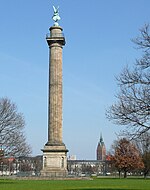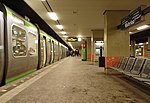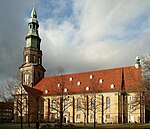Hanover Schützenfest

The Hanover Schützenfest (German: Schützenfest Hannover) in Hanover, Germany is the largest marksmen's funfair in the world. The origins of this funfair are located in the year 1529. It takes place once a year, is commercially organized and includes a big entertainment program. The Schützenfest consists of around 5,000 marksmen, 250 rides and inns, five large beer-tents and the "Marksmen's Parade". The highlight of this funfair is the 12 kilometres (7.5 mi) long Parade of the Marksmen with more than 10,000 participants from Germany and all over the world, among them around 5,000 marksmen, more than 100 bands and more than 60 wagons, carriages and big festival vehicles. It is the longest parade in Europe and probably the world. More than one and a half million people visit this funfair every year. The landmark of the funfair is the 60-metre (200 ft) tall Steiger Ferris wheel, which can carry 420 people in its 42 passenger cabins.
Excerpt from the Wikipedia article Hanover Schützenfest (License: CC BY-SA 3.0, Authors, Images).Hanover Schützenfest
Bruchmeisterallee, Hanover Calenberger Neustadt (Centre)
Geographical coordinates (GPS) Address Nearby Places Show on map
Geographical coordinates (GPS)
| Latitude | Longitude |
|---|---|
| N 52.362 ° | E 9.729 ° |
Address
Schützenplatz
Bruchmeisterallee
30169 Hanover, Calenberger Neustadt (Centre)
Lower Saxony, Germany
Open on Google Maps











